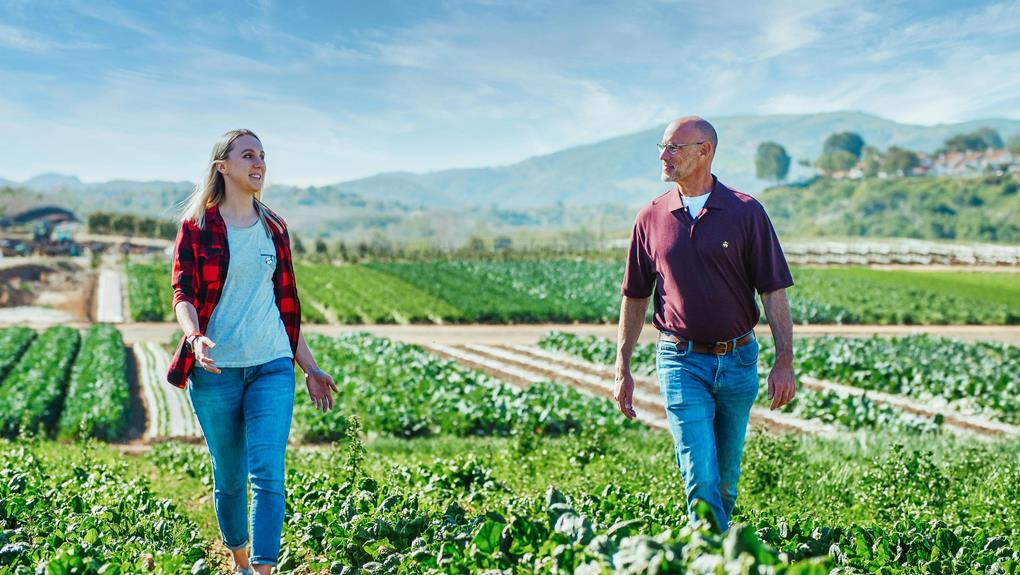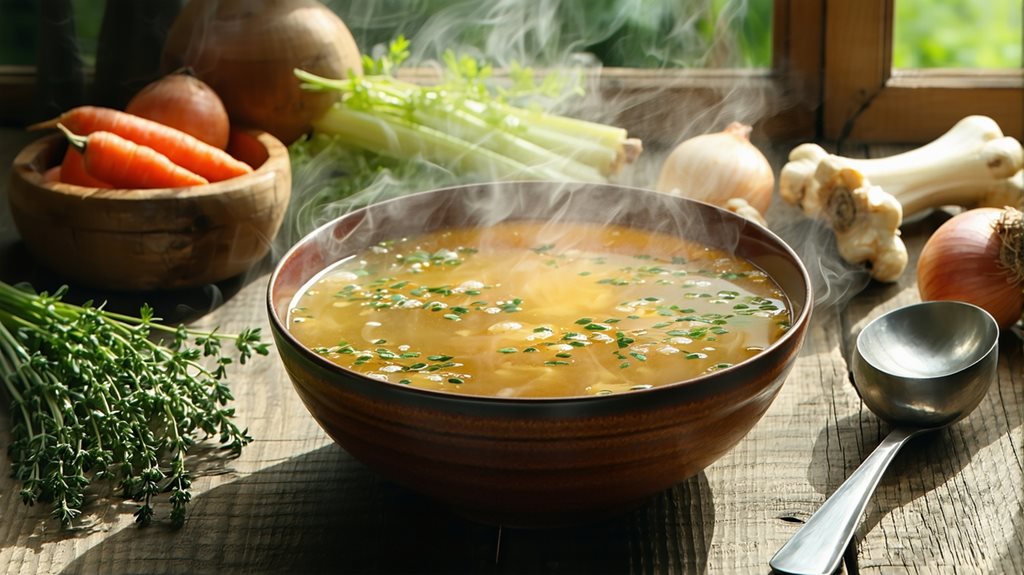You can cultivate leafy greens, nurture cherry tomatoes, and harvest fresh herbs all year round in your Aerogarden. This innovative indoor gardening system not only simplifies the process but also optimizes your space for consistent, efficient growth. Whether you're a seasoned gardener or a curious novice, you'll find that the controlled environment of an Aerogarden offers a unique opportunity to explore a variety of crops. But how exactly does this device manage to support such a diverse range of plants, and what might be the limitations or challenges you could face? Let's explore these aspects further.
Key Takeaways
- Grow leafy greens like spinach and kale efficiently using adjustable LED lights and a water circulation system.
- Cultivate cherry tomatoes by ensuring they receive 16-18 hours of daily light and frequent water monitoring.
- Produce a variety of fresh herbs, harvesting them just before they bloom to maintain potent flavors.
- Raise spicy peppers with optimal ambient temperatures of 70°F to 80°F and at least 14-16 hours of daily lighting.
- Plant mini cucumbers and green beans, benefiting from full control over growing conditions and space management.
Growing Leafy Greens
Leafy greens, such as spinach and kale, thrive effortlessly in an Aerogarden. You'll find that managing these plants in your indoor setup gives you ultimate control over their growth conditions. With adjustable LED lights and a reliable water circulation system, you can dictate exactly how much light and nutrients your greens receive. This precision guarantees that your leafy greens aren't only surviving but flourishing.
You've got the ability to tweak the settings based on the specific needs of each plant. For instance, if you notice your spinach prefers less light, you can easily adjust the light intensity. Similarly, if your kale seems to be growing slower, a quick modification to the nutrient feed might just do the trick. It's all about finding that perfect balance that caters to the unique preferences of each plant type.
Furthermore, the pest-free environment of an Aerogarden means you won't be battling the usual garden pests. This reduces the need for chemical pesticides, keeping your greens organic and healthy.
You're in charge here, and with a bit of observation and adjustment, you can cultivate a lush, vibrant batch of leafy greens right in your own home.
Cultivating Cherry Tomatoes
Next, let's explore how you can successfully grow cherry tomatoes in your Aerogarden. You'll start by selecting a high-quality seed pod kit specifically designed for cherry tomatoes. Make sure you're placing the pod in the correct slot of your Aerogarden, as proper placement is essential for ideal growth.
You'll need to maintain control over the environmental factors vital for cherry tomatoes. Adjust the light to ensure your plant gets around 16 to 18 hours of light daily. This mimics the long days of summer, providing your tomatoes with the energy they need to flourish.
Monitor the water levels frequently—cherry tomatoes are thirsty and require consistent moisture to avoid stress, which can impact their growth and fruit production.
Managing the nutrient cycles is crucial. Your Aerogarden will prompt you when it's time to add nutrients, but you should also observe your plants for any signs they might need a boost. Yellowing leaves or slow growth often indicate a need for more nutrients.
Harvesting Fresh Herbs
You'll find that harvesting fresh herbs from your Aerogarden is a simple and rewarding process. Once your herbs have reached a suitable size, typically 4-6 weeks after planting, you can begin to harvest. It's important to take charge by cutting only one-third of the plant at a time. This method guarantees your herbs continue to grow and produce for an extended period.
Use a pair of sharp scissors or small pruning shears for precision cutting. Target the outer leaves first, as this stimulates new growth from the center. By focusing on the older leaves, you maintain the plant's vitality and productivity. Be consistent in your approach—regular trimming not only shapes your plants but also boosts their output.
Remember, your herbs' flavors are most potent just before they bloom. Keep an eye out for flower buds. If you see any, it's time to harvest aggressively. This will redirect the plant's energy back to leaf growth. You're in control of ensuring the continuous supply of fresh herbs by monitoring and responding to the plant's cues diligently.
With these steps, you'll enhance your culinary creations with the freshest flavors right from your Aerogarden, all while mastering the art of herb harvesting.
Raising Spicy Peppers
After mastering the harvest of fresh herbs, raising spicy peppers in your Aerogarden offers an exciting challenge with flavorful rewards. You'll find that peppers, such as jalapeños, habaneros, and cayennes, thrive in the controlled environment provided by the Aerogarden. Start by selecting high-quality seed pods that are compatible with your unit. This is essential as the right seeds ensure robust growth.
You must maintain ideal conditions. Peppers demand warmth, so keep the ambient temperature around 70°F to 80°F. Adequate lighting is also vital; make sure your Aerogarden's lights are on for at least 14-16 hours daily to mimic the full sun these plants crave. Monitoring the water level consistently is key; peppers are sensitive to water stress, both drought and oversaturation.
Managing the nutrient cycles precisely allows you to control growth and fruiting. Peppers benefit from regular feeding, but over-fertilization can lead to lush foliage at the expense of fruit production. Calibrate your nutrient dosages based on the growth stage of the plant.
As your peppers mature, regular pruning helps to encourage a healthier, more productive plant. Remove any leaves that overshadow fruits and pinch off early flowers to redirect energy to fewer, but larger, peppers.
With these steps, you'll enjoy a bountiful, spicy harvest.
Planting Juicy Strawberries
Planting juicy strawberries in your Aerogarden lets you enjoy fresh, sweet berries right from your home. You'll oversee everything from the variety to the exact moment of harvest. Start by selecting high-yielding varieties like 'Albion' or 'Seascape', which adapt well to indoor environments. Make sure your Aerogarden pods are equipped with these seeds, and set the system to provide 16 to 18 hours of light daily, which strawberries thrive under.
Managing nutrients is essential; strawberries need a balanced feed that supports both leaf growth and fruit development. Adjust the pH level of your water to slightly acidic, around 5.5 to 6.5, to optimize nutrient uptake. Keep a close eye on these settings through your Aerogarden's control panel, tweaking as needed for robust growth.
Pollination is another aspect you'll oversee. Unlike outdoor gardens, where bees naturally pollinate strawberry flowers, you'll need to assist by gently shaking the plants or using a small brush to transfer pollen from flower to flower. This ensures your plants are productive.
Producing Crisp Lettuce
Growing crisp lettuce in your Aerogarden is surprisingly simple and rewarding. With the right control over a few key elements, you'll find yourself harvesting fresh, crispy leaves right from your indoor garden.
Lettuce, being a fast-growing vegetable, responds well to the consistent conditions provided by an Aerogarden. Here's how you can optimize your growing experience:
- Select the Right Variety: Choose varieties like Romaine, Butterhead, or loose-leaf that are known for their adaptability to hydroponic systems. These types will thrive and produce the crisp texture you love.
- Adjust Nutrients and pH Levels: Lettuce prefers a slightly acidic environment with a pH between 5.5 and 6.5. Regularly check and adjust these levels using your Aerogarden's controls. This maintains that your lettuce absorbs maximum nutrients from the water, enhancing growth and crispiness.
- Manage Light Intervals: Lettuce needs around 14-16 hours of light per day. Use your Aerogarden's automated light timer to maintain this schedule consistently. Adequate light is important for photosynthesis, leading to robust, vibrant leaves.
Growing Mini Cucumbers
Mini cucumbers can flourish in your Aerogarden, offering a continuous yield of crunchy, invigorating vegetables. You'll find these smaller cucumbers are perfect for snacking and salads, and they're low-maintenance, which is ideal for your busy lifestyle.
By controlling the environment in your Aerogarden, you guarantee that your mini cucumbers receive ideal light, water, and nutrients. This means you can pretty much secure a successful crop without the unpredictability of outdoor gardening.
Here's what you need to know to get started:
| Requirement | Details |
|---|---|
| Seed Pod Kit | Mini Cucumber Kit |
| Germination | 7-14 days |
| Harvest Time | 12 weeks from planting |
Make sure you regularly prune your cucumber plants. This isn't just busywork; it's essential. Pruning helps to manage plant size and encourages healthier, more productive growth. Don't let your plants get too top-heavy; proactively control their shape and health by removing older leaves and any non-fruiting branches. This will direct the plant's energy towards producing a bountiful harvest of mini cucumbers.
Your role in monitoring and adjusting settings as needed places you in command of the growth cycle, turning your Aerogarden into a source of both food and satisfaction.
Cultivating Green Beans
You'll find cultivating green beans in your Aerogarden both rewarding and straightforward. This method gives you full control over the growing conditions, guaranteeing a bountiful harvest right from your countertop. Green beans thrive in a controlled environment where variables like water, light, and nutrients are easily managed.
To maximize your success, follow these steps:
- Select the Right Variety: Opt for bush bean varieties as they're more suited to the confined space of an Aerogarden. These plants generally require less support and manage their growth more compactly.
- Plant Strategically: Space the pods evenly in your Aerogarden. Green beans don't need overcrowding to flourish. This spacing ensures each plant receives adequate light and air circulation, minimizing the risk of disease.
- Monitor and Adjust: Keep an eye on water levels and nutrient concentrations. Your Aerogarden will likely guide you, but you'll want to tweak settings based on the growth and appearance of your beans. Adjusting these factors promptly puts you in control of your crop's health and productivity.
Raising Edible Flowers
After mastering green beans, consider adding edible flowers to your Aerogarden lineup for both beauty and taste. You'll find that flowers like nasturtiums, marigolds, and pansies not only add a splash of color to your indoor garden but also bring complexity to your culinary creations. With your Aerogarden, you can control the growth of these flowers from seedling to bloom, ensuring they're free from pesticides and harmful chemicals often found in store-bought counterparts.
You'll want to start by selecting seeds that thrive in an Aerogarden's environment. Nasturtiums, for instance, are ideal as they require minimal care and yield both vibrant flowers and edible leaves. The peppery taste of nasturtium flowers adds a delightful twist to salads and sandwiches. Similarly, marigolds produce a slightly citrusy flavor, making them perfect for garnishing and enhancing dishes.
Be sure to monitor the light and water levels closely. These flowers typically need ample light to bloom abundantly, so set your Aerogarden's lights to mimic long summer days. Adjusting the nutrient levels is also essential; a balanced feed will promote healthier, more robust blooms.
Producing Root Vegetables
Next, explore growing root vegetables like carrots and radishes in your Aerogarden for fresh, flavorful additions to your meals. Root vegetables can be a bit tricky in typical hydroponic setups due to their need for ample space to expand underground, but with the right approach, you can master their growth in your Aerogarden.
When cultivating root vegetables, consider these key factors:
- Choose the Right Varieties: Opt for short-rooted or miniature varieties that are better suited to the confined space of Aerogarden pods. Varieties like 'Parisian' carrots or 'Cherry Belle' radishes thrive in smaller spaces.
- Monitor Water Levels Diligently: Root vegetables require consistent moisture to develop well. Too little water can stunt growth, while too much can lead to rot. Keep a close eye on your system to maintain ideal growth conditions.
- Harvest Timely: Don't wait too long to harvest your root veggies. Overgrown roots can become tough and lose flavor. Harvesting at the peak of maturity guarantees the best taste and texture.





Konnichiwa! (Hello!) I'm Pat Tokuyama, a Japanese tofu cookbook author, who travels for music, food, and adventure. If you like Japanese tea, checkout some of the newestorganic japanese tea, matcha bowls and noren and more!
** Curious about the Plant Based Japanese Cooking Club? ** Learn more here!